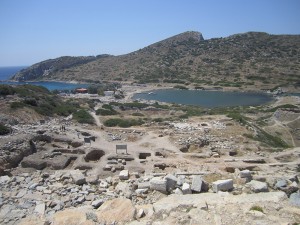(guest post by Tyler Laughlin)
My experiences last year working on the Burgaz Harbors Project—my first archaeological experience—have been influential to the directions of my dissertation research. A returning member of the 2014 team and a PhD student in the Nautical Archaeology Program at Texas A&M University, my research will focus on historical evidence for the movement of harbors within cities, as well as the relocation of coastal cities entirely. While built constructions such as harbors and other urban works (walls, buildings, etc.) seem to be permanent features of maritime centers, historical sources from Aegean cities in the Classical Period offer evidence for a number of types of movement at various levels from port to city. What reasons are given for such movements? Are there discernible patterns in the historical accounts of relocation? Was relocation a common occurrence or something done only rarely? These are some of the questions I hope to answer through my research.
Economics, warfare, politics, and environmental change are all possible motivators for the movement of Greek coastal cities throughout the Aegean, and the historical sources suggest that various combinations of these options could have led to change. My dissertation seeks answers to questions about such movements, and a more general inquiry into the role of the sea in influencing the historical fortune of cities. As I work towards the completion of my Ph.D., I am fortunate to have found a project that fits so well with my research interests and look forward to seeing whether the archaeological evidence from the harbors at Burgaz matches broader historical trends I hope to identify in the Classical Aegean world.


